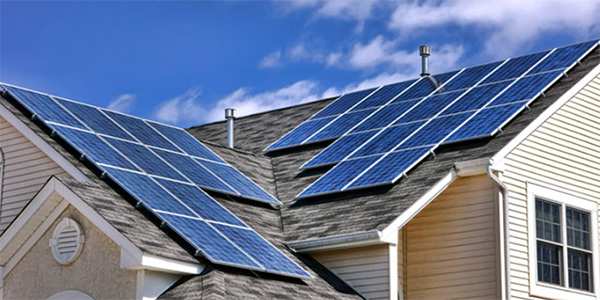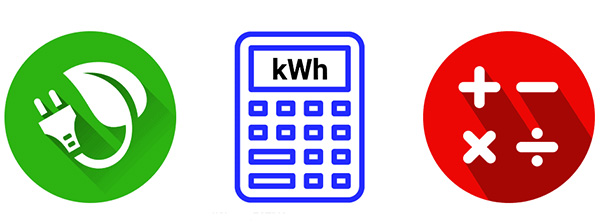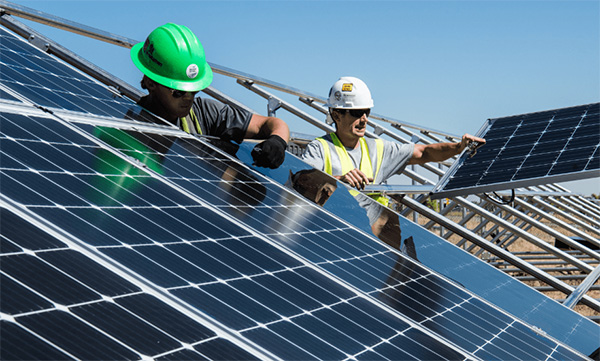How Much Solar Panels Can Save You in a Year?
2023-09-28
Description
The savings from solar panels can vary widely based on factors like location, energy consumption, and system size. However, a typical homeowner can save around $1,000 to $2,000 annually, with residents in sunnier states possibly saving even more due to higher energy production.Understanding Solar Panel Efficiency
Solar panel efficiency has emerged as a crucial determinant of the viability of solar energy. It refers to the capability of a solar panel to convert sunlight into usable electricity. A high-efficiency panel will produce more electricity from the same amount of sunlight, reducing the number of panels needed and, consequently, the cost. In understanding the efficiency of solar panels, it is essential to delve into their operation, the factors affecting their efficiency, and the latest advancements in this field.How Solar Panels Work
Solar panels, primarily composed of solar cells, operate by harnessing energy from the sun. These solar cells are mostly made from silicon and are designed to absorb photons from sunlight. When photons hit a solar cell, they release electrons from their atoms. If conductors are attached to the positive and negative sides of a cell, it forms an electrical circuit. When electrons flow through such a circuit, they generate electricity. Here, the key is the Photovoltaic (PV) effect, a process where light (photons) generates voltage, creating electrical power. The generated electricity is usually direct current (DC) and is converted to alternating current (AC) by an inverter for use in homes and businesses.Efficiency Factors and Losses
Understanding the efficiency of solar panels is incomplete without recognizing the elements affecting it. These can range from the type of material used in the solar cells to external environmental factors.- Material Quality The quality and type of materials used in constructing the solar cell primarily dictate its efficiency. For instance, monocrystalline silicon solar panels are generally more efficient but more expensive than their polycrystalline counterparts.
- Temperature Higher temperatures can lead to a decrease in the performance of solar panels. Many solar panels exhibit a decrease in output for every degree above 25°C (77°F), stressing the importance of adequate cooling and ventilation.
- Incident Light Angle The angle at which light hits the solar panel also affects its efficiency. Panels are most efficient when sunlight is perpendicular to them, highlighting the relevance of optimal positioning and, if possible, tracking systems.
- Dirt and Debris Accumulation of dirt, dust, and other debris on the surface of the solar panel can block sunlight, thereby reducing efficiency. Regular cleaning is therefore crucial for maintaining optimal performance.
Latest Developments in Solar Panel Efficiency
Recent advancements in solar technology have led to the development of solar panels with higher efficiency and lower costs. One such breakthrough is the advent of Perovskite Solar Cells, which have shown potential for high efficiency and low production costs, although longevity and scalability are still areas needing improvement. Another noteworthy development is the integration of Concentrated Photovoltaic (CPV) systems, which use lenses or mirrors to focus sunlight onto high-efficiency solar cells. Although CPV systems have high efficiency, they are most suitable for areas with high direct sunlight and require precise tracking systems.Top Performers in Efficiency
To truly understand the advancements in solar panel efficiency, examining the industry leaders and their top-performing products is crucial.- SunPower holds a record with its X22 series, boasting an efficiency of 22.8%.
- LG’s NeON R series offers an impressive efficiency of 21.7%.
- Panasonic’s HIT series, with an efficiency of 20.3%, is also a strong contender in the efficiency race.
- Tongwei, a distinguished name in the solar sector, is known for its innovative and high-efficiency solar solutions, delivering exceptional performance and reliability, contributing to the progressive evolution of solar technology.
Costs of Installing Solar Panels
When considering the switch to solar energy, understanding the associated costs is essential. Installing solar panels involves a series of expenses, starting from the initial investment costs to ongoing maintenance and operational costs. Furthermore, many regions offer potential tax credits and incentives that can significantly impact the overall expense. A comprehensive exploration of these costs aids in making an informed decision on adopting solar energy solutions.Initial Investment Costs
The initial investment is a major component of solar panel installation costs. This encompasses the price of the solar panels, inverters, mounting equipment, and labor for installation.- Solar Panels: The price of solar panels has been declining, averaging around $2.50 to $3.50 per watt. Therefore, a residential solar panel system usually costs between $15,000 to $25,000, depending on the size and type of panels chosen.
- Inverters: The cost of inverters, which convert the generated DC to AC, ranges from $1,000 to $2,000 for a typical residential installation.
- Installation and Labor: Installation and labor costs can vary widely but typically range from $1,000 to $5,000.
Maintenance and Operational Costs
Once the solar panel system is installed, owners need to account for maintenance and operational costs. While solar panels generally require minimal maintenance, periodic checks and cleaning are crucial to ensure optimum performance.- Cleaning and Inspections: Regular cleaning and inspections are generally inexpensive but vital, usually costing around $150 to $350 per annum.
- Repairs and Replacements: Occasional repairs and replacements of components such as inverters or mounting equipment can incur additional costs. However, many manufacturers offer extensive warranties, mitigating some of these expenses.
Potential Tax Credits and Incentives
To promote the adoption of solar energy, various governments and institutions offer tax credits and incentives, significantly reducing the net cost of solar panel installation.- The Investment Tax Credit (ITC) allows homeowners and businesses in the United States to deduct 26% of the cost of installing a solar energy system from their federal taxes as of 2023.
- Numerous states also provide additional incentives, grants, and rebates, which can be combined with federal tax credits. Examples include California’s Self-Generation Incentive Program (SGIP) and New York’s Megawatt Block program.
- Furthermore, many utilities offer net metering, where solar panel owners receive credit for the excess energy they generate and feed back to the grid, lowering their energy bills.
Estimating Yearly Savings
Estimating yearly savings is crucial for individuals and businesses contemplating the shift to solar energy. It involves a careful assessment of energy consumption, consideration of various factors influencing savings, and examination of real-life case studies to predict the likely savings accurately. A thorough understanding of these elements will enable prospective solar panel owners to make knowledgeable decisions and optimize their investments in solar energy solutions.Calculating Energy Consumption
To estimate potential savings from solar panel installation, determining current energy consumption is the starting point. It involves evaluating energy bills to understand usage patterns and costs. By knowing how much energy is consumed, one can determine the size of the solar panel system needed to meet those needs.- Analyzing Energy Bills: Review your energy bills over the past 12 months to ascertain your average monthly consumption, typically measured in kilowatt-hours (kWh).
- Sizing the Solar System: Use the average monthly consumption to determine the capacity of the solar system needed. The typical residential solar system is around 5 kW, sufficient to produce approximately 7,000 to 8,000 kWh per year, depending on location and sunlight availability.
Factors Affecting Savings
Several factors influence the amount of savings realized from solar panel installation, and acknowledging them is vital for accurate estimations.- Geographical Location: The geographical location affects the amount of sunlight received, impacting the energy production of the solar system. Areas with more sunlight will generally yield higher savings.
- System Efficiency: The efficiency of the solar panels and other components determines how much of the incoming sunlight is converted to electricity, affecting the overall savings.
- Energy Prices: The cost of electricity from the grid in your area influences the savings from solar energy. Higher energy prices typically result in greater savings from solar panel installations.
- Incentives and Rebates: Availability of tax credits, rebates, and incentives can significantly impact the savings by reducing the effective cost of the solar system.
Real-life Case Studies
Examining real-life case studies is invaluable in estimating probable savings as they provide practical insights into the actual benefits realized by solar panel owners.- A study involving a homeowner in Arizona with a 7 kW solar system demonstrated annual savings of approximately $1,200, given the state’s high sunlight exposure and relatively high electricity costs.
- Conversely, a homeowner in Washington, with a similar-sized system experienced annual savings of around $800, reflecting the state’s lower sunlight availability and lower electricity prices.
Comparing Solar Savings to Traditional Energy Costs
When weighing solar savings against traditional energy costs, one must consider various aspects, including the fluctuating prices of conventional energy, the environmental and social implications, and the economic factors like return on investment and the break-even point. By making this comparison, individuals and organizations can understand the long-term benefits and impact of adopting solar energy over traditional energy sources.Traditional Energy Price Trends
Traditional energy sources like coal, oil, and natural gas have been subject to substantial price fluctuations over the years, owing to factors like supply and demand imbalances, geopolitical tensions, and market speculations.- Price Volatility: The prices of oil and gas have been highly volatile, experiencing peaks and troughs depending on global events and market conditions. This volatility makes it challenging to predict energy costs accurately over the long term.
- Rising Trends: Over the long term, traditional energy prices have generally exhibited an upward trend, driven by the depletion of finite fossil fuel resources and growing global energy demand.
Environmental and Social Costs
The environmental and societal implications of traditional energy sources are substantial, impacting ecosystems, public health, and contributing to climate change.- Emissions and Pollution: Burning fossil fuels releases significant amounts of greenhouse gases and pollutants, leading to global warming, air and water pollution, and adverse health effects.
- Resource Depletion and Habitat Destruction: The extraction and use of fossil fuels result in the depletion of natural resources, habitat destruction, and biodiversity loss.
Return on Investment and Break-even Point
Comparing the economic viability of solar and traditional energy requires evaluating the return on investment (ROI) and determining the break-even point.- Investment and Savings: The initial investment in solar panels can be substantial, but the ongoing savings on energy bills and potential incentives can result in attractive ROIs. For example, a solar system costing $20,000 with annual savings of $2,000 has an ROI of 10% per annum.
- Break-even Point: The break-even point is when the cumulative savings equal the initial investment. In the above example, the break-even point would be reached in 10 years.
- Product Recommendation: When considering solar panel installation, products from renowned manufacturers like Tongwei are worth exploring. Tongwei is recognized for delivering high-quality, efficient, and reliable solar products, contributing to enhanced savings and shorter break-even periods.
Other Benefits of Solar Energy
Beyond financial savings, the adoption of solar energy provides a myriad of additional benefits, contributing to environmental conservation, enhanced property value, and increased energy independence and resilience. These advantages not only favor individual solar panel owners but also have widespread positive implications for communities and the planet, reinforcing the significance of transitioning to renewable energy sources like solar power.Environmental Impact Reduction
Choosing solar energy over fossil fuels substantially reduces the environmental footprint, preserving ecosystems and combating climate change.- Carbon Emission Reduction: A typical residential solar PV system can save many tons of carbon dioxide being emitted into the atmosphere over its lifetime, significantly mitigating the homeowner’s carbon footprint. For instance, the U.S. Environmental Protection Agency estimates that an average 6 kW solar system can offset around 6 tons of CO2 annually.
- Conservation of Resources: Utilizing solar energy helps in preserving finite natural resources, reducing the reliance on coal, oil, and natural gas, and diminishing the negative environmental impacts associated with their extraction and usage.
Increase in Property Value
Installing solar panels can have a considerable impact on the value of a property, making it a lucrative investment for homeowners.- Enhanced Property Value: Studies have shown that homes with solar panel installations are perceived as more attractive, leading to an increase in property values. The National Renewable Energy Laboratory (NREL) found that homes with solar panels sell 20% faster and for 17% more money.
- Attractiveness to Buyers: Potential homebuyers are often drawn to homes with solar installations due to the prospects of lower utility bills and environmental conservation, making properties with solar systems more marketable.
Energy Independence and Resilience
Adopting solar energy enhances energy self-sufficiency and fortifies resilience against power outages and fluctuations in energy prices.- Reduced Dependency on Grid: Solar panel owners can generate their own electricity, decreasing reliance on the utility grid and shielding themselves from volatile electricity prices.
- Backup Power Supply: With the addition of a solar battery storage system, solar panel owners can store excess energy produced during the day for use during nighttime or power outages, ensuring uninterrupted power supply.




